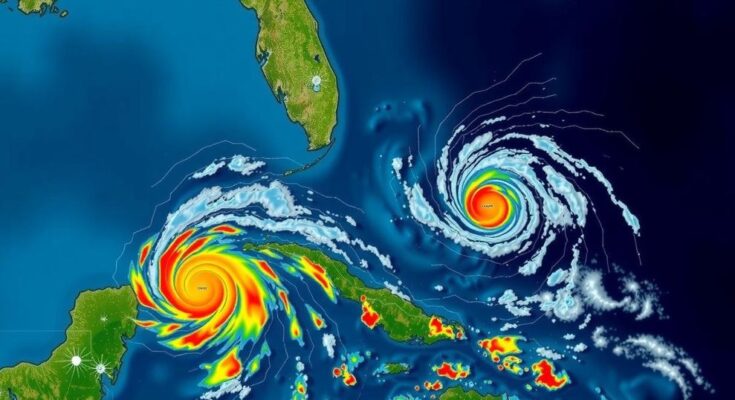Florida has experienced only three hurricanes landfall in November historically, but the rise in ocean temperatures has increased the possibility of more November hurricanes in the future. If Hurricane Sara hits, it will mark a significant record for the state. The dynamics of the hurricane season continue to evolve, increasing the necessity for preparedness.
Florida has historically experienced only three hurricanes making landfall in November since hurricane records began: an unnamed storm in 1935, Hurricane Kate in 1985, and Hurricane Nicole in 2022. Should the potential Hurricane Sara make landfall next week, it would mark the fourth hurricane to strike Florida in November, significantly increasing the state’s overall hurricane statistics for the season. While hurricane season officially peaks in September and ends on November 30, the warmer ocean temperatures currently present facilitate an elevated risk of tropical development, reminiscent of the typical September conditions. Hurricane Nicole, which made landfall on November 10, 2022, as a Category 1 hurricane, caused significant damage and resulted in 11 indirect fatalities. Hurricane Kate struck on November 22, 1985, initially as a Category 3 but landing in Florida as a Category 2, leading to numerous casualties and considerable economic loss. The Yankee hurricane in 1935 also hit Florida in November, showcasing the historical precedent of late-season hurricanes impacting the region. Despite uncommon, late-season hurricanes tend to impact Florida primarily due to the warm oceanic conditions that can linger longer than anticipated. The recent increase in oceanic heat content in both the Gulf and Caribbean enhances the possibility of hurricane formation well beyond the projected season’s end, suggesting that Florida’s residents must remain vigilant even as November progresses. According to Ryan Truchelut from WeatherTiger, “Total oceanic heat content of the Gulf has slightly increased in the last three weeks, hovering around mid-October norms.” In total, while the number of hurricanes making landfall in Florida during November remains low, the conditions conducive to hurricane development during this time can no longer be underestimated. With records reaching back 173 years, the likelihood of landfall hurricanes in November suggests an evolving pattern affected by climate change and warm ocean temperatures, necessitating further research and preparedness efforts.
Hurricane records provide a historical context for understanding the frequency of hurricane landfalls in Florida during the month of November. Traditionally, this timeframe is characterized by cooler ocean temperatures, which typically limit storm development; however, recent trends indicate a worrying shift towards warmer waters, potentially increasing the likelihood of hurricane activity at this late stage of the hurricane season. The Atlantic hurricane season, spanning from June 1 to November 30, has seen anomalies in storm behavior, with particular attention placed on the increasing temperatures of oceanic regions. This increase has implications for storm intensity and the probability of hurricanes making landfall in unusual months, such as November, thereby raising concerns about preparedness and response strategies within affected states.
In summary, Florida has recorded three hurricanes making landfall in November since 1935, with the potential of a fourth occurring should Hurricane Sara reach the state. The increased ocean temperatures suggest that the historical trends may no longer dictate future patterns, heightening the need for awareness and preparedness as the likelihood of late-season hurricanes seems to be on the rise. Acknowledgment of these changes is crucial for both residents and stakeholders involved in disaster management.
Original Source: www.heraldtribune.com




